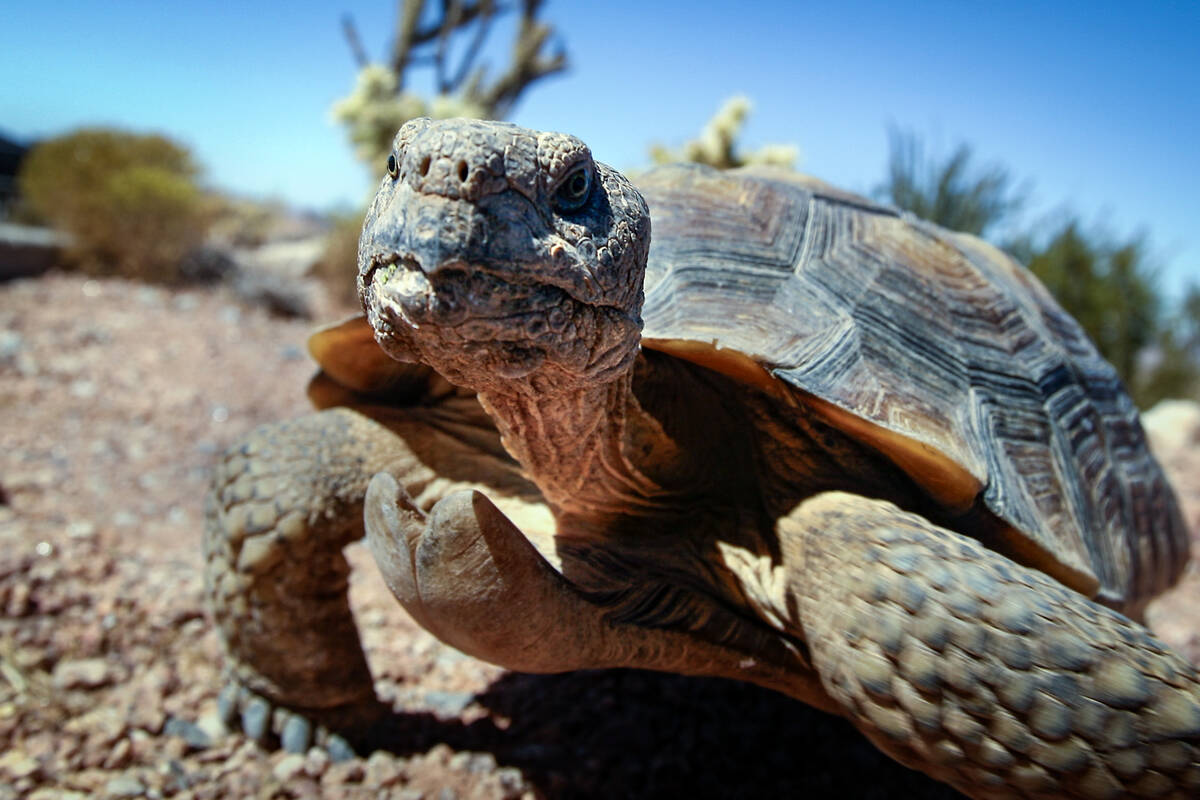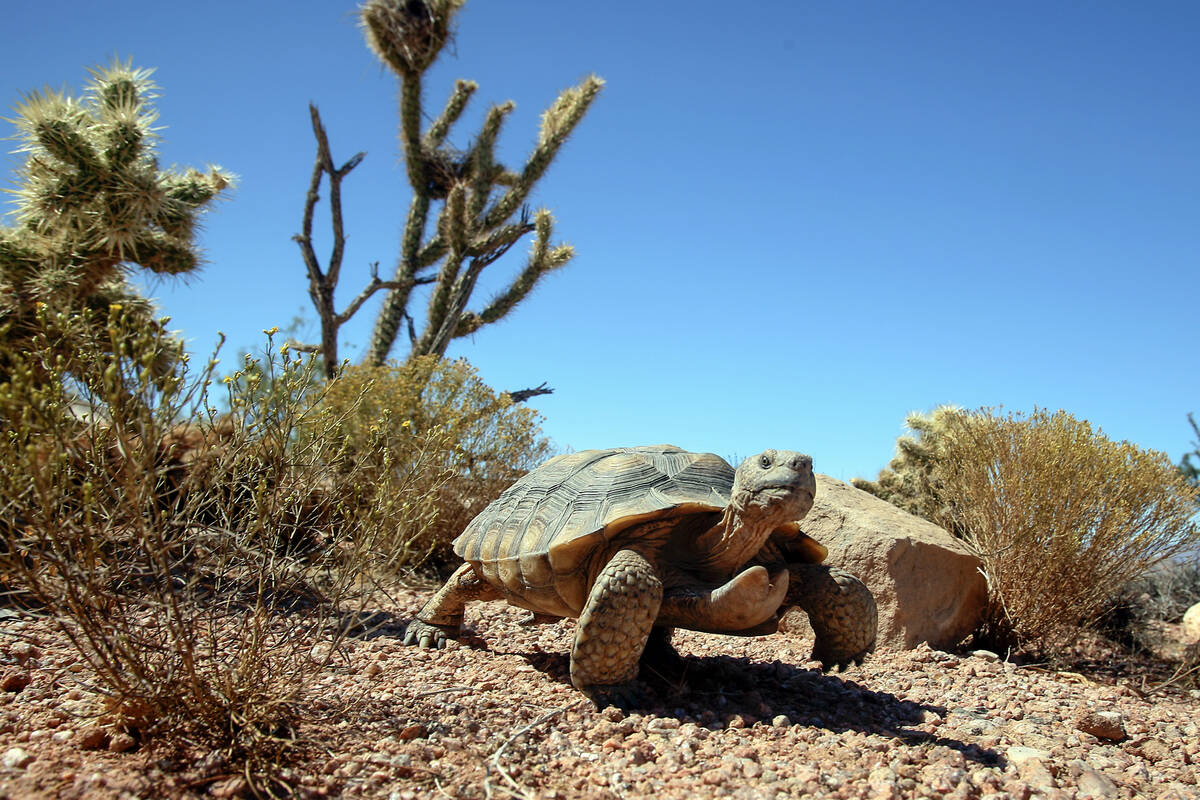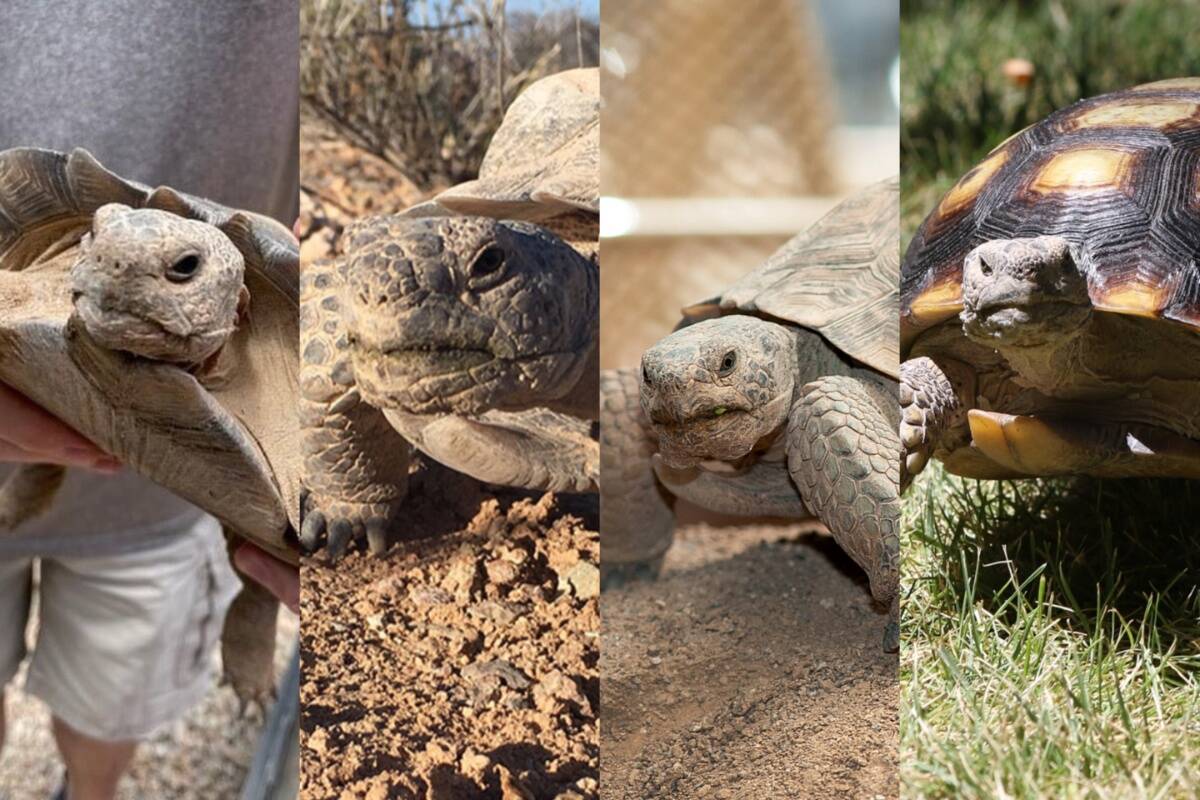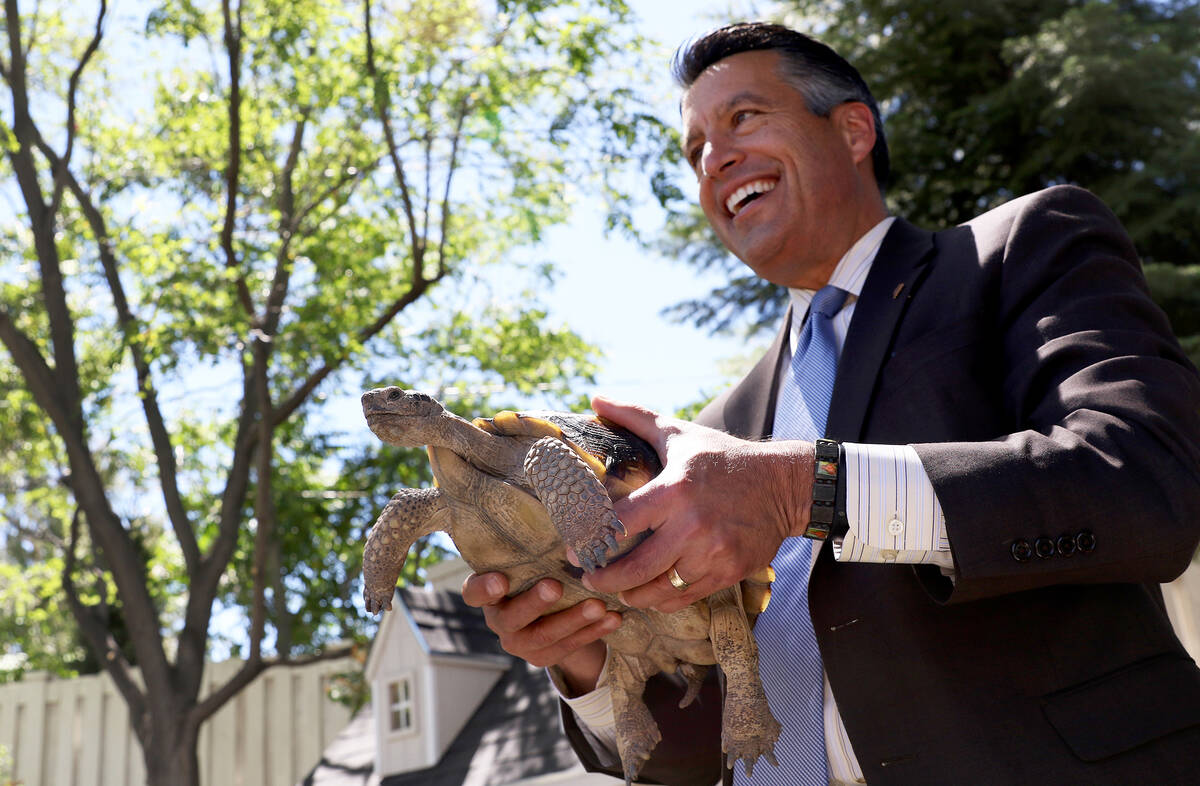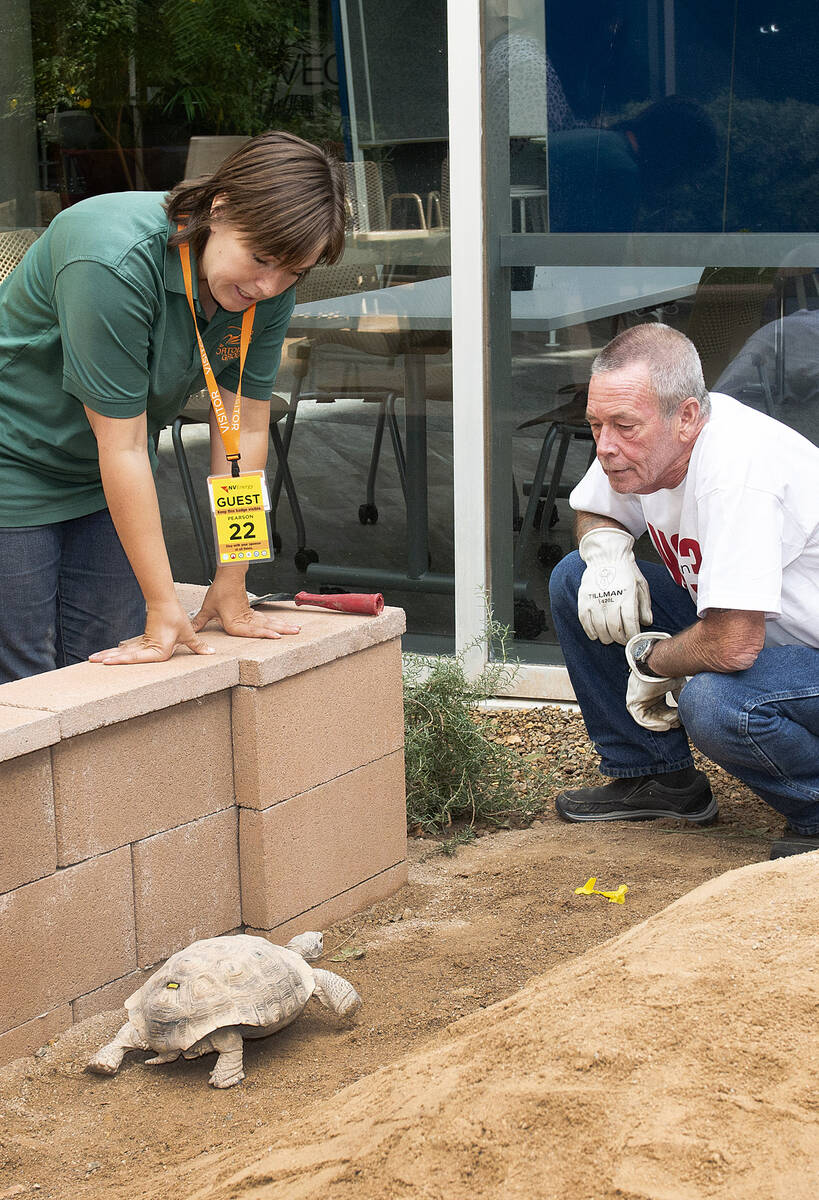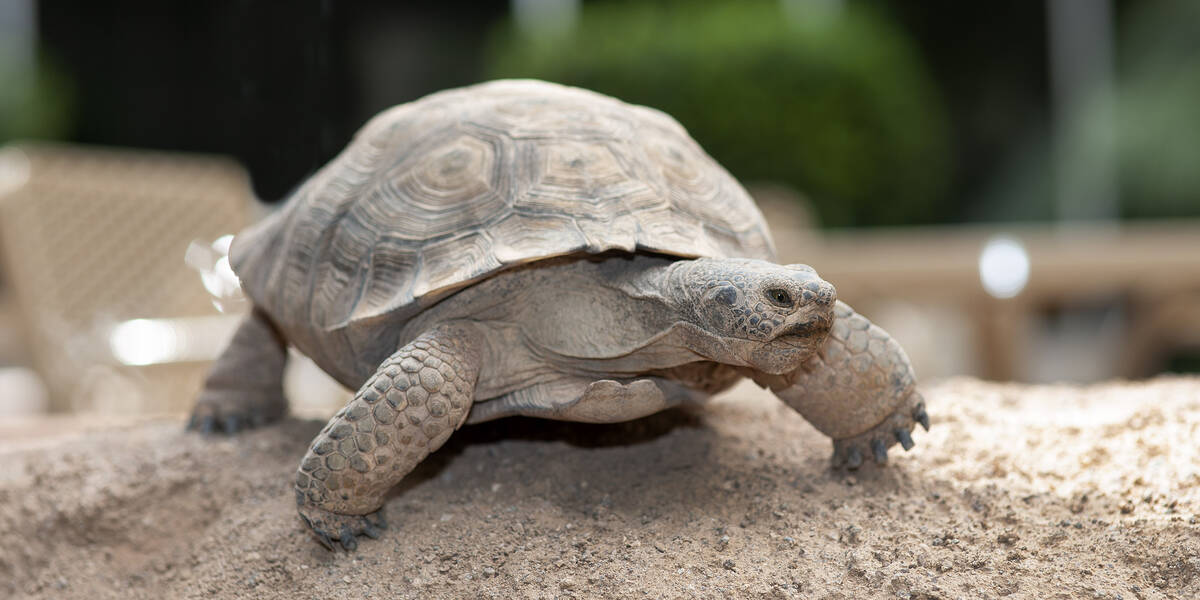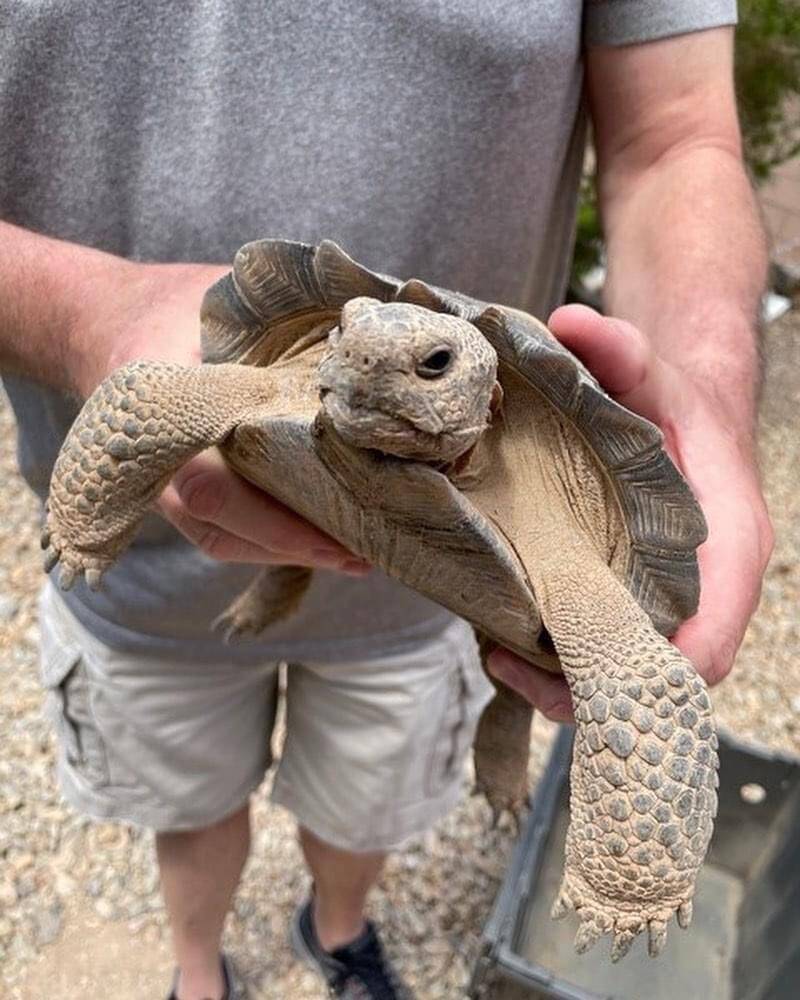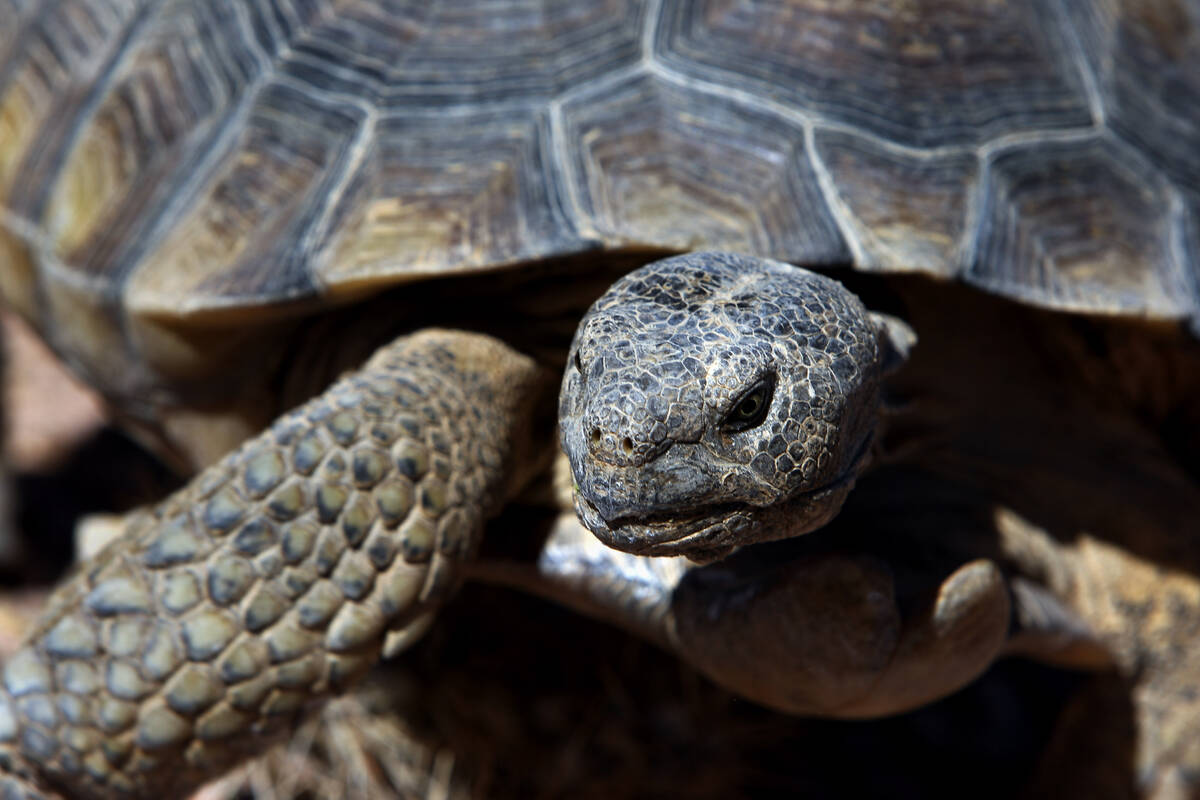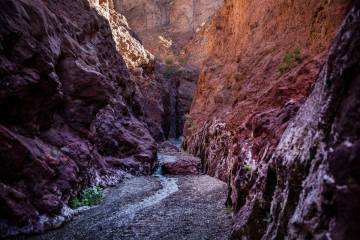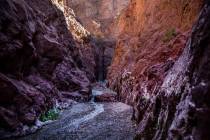Slow and steady: When will Mojave Max, Nevada’s other famous tortoises come out?
It’s springtime again in Southern Nevada, and for many schoolchildren across Clark County, that means it’s time to guess when Mojave Max will emerge from his burrow.
Mojave Max, a desert tortoise mascot for the Clark County Desert Conservation Program, is Las Vegas’ Punxsutawney Phil equivalent. Every year, elementary students guess when the famous reptile will emerge from his underground burrow at the Springs Preserve after his monthslong slumber (called brumation), marking the beginning of spring in the desert.
Max had a historically late emergence last year, coming out on April 24, 2023. Desert tortoises typically emerge between March and April each year, when temperatures even out and are consistently warm for their cold-blooded bodies.
Audrie Locke, public outreach coordinator for the program, says the tortoise likely won’t be asleep as long as he was last year.
After hunkering down last year with two female tortoises in a large, deep burrow, Max decided this year to be alone in a shallow burrow he’s brumated in before, Locke said. With Max sleeping closer to the burrow’s entrance, it’s much easier for him to feel the ground’s warmth and potentially decide to step out sooner.
“The zoologist out there has reported to me that he has moved, meaning he’s started to turn around, so he’s active in his burrow,” she said.
But Max isn’t the only famous tortoise in Nevada.
NV Energy, Opportunity Village and even the Governor’s Mansion have adopted tortoises who serve as little mascots for the organizations.
As of Friday, the tortoises were all still asleep, meaning the unofficial race is still on for which tortoise will wake up first.
Who are Nevada’s tort-fluencers?
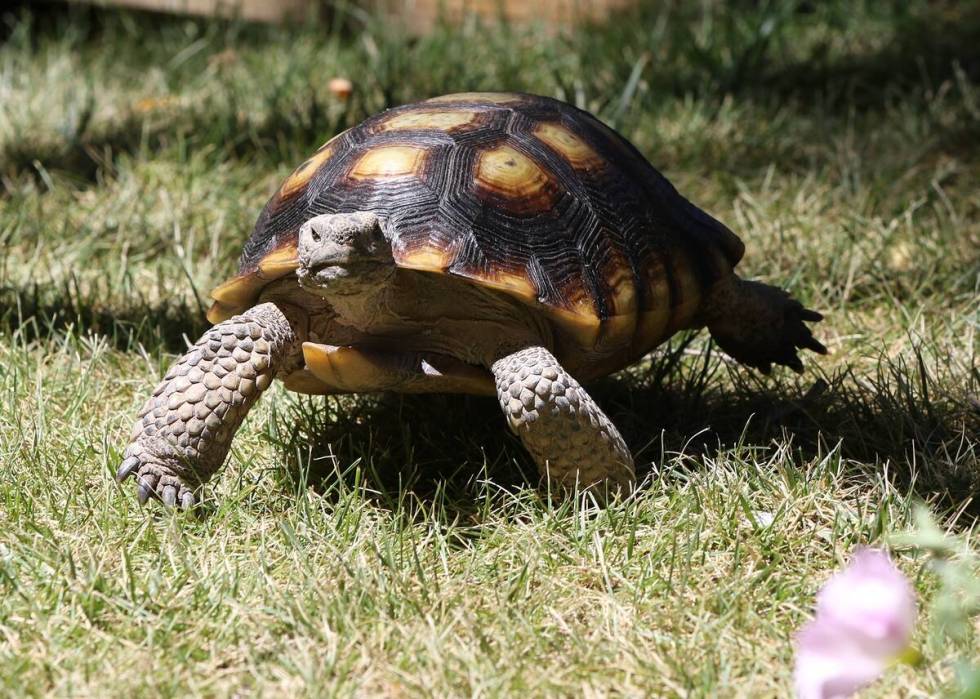
Gov. Joe Lombardo’s only shelled roommate is Carson the tortoise, who was adopted by then-Gov. Brian Sandoval in 2016 to be a permanent resident of the mansion.
Carson spends his winters in a heated shed up in cold Northern Nevada. Kristen Dillard, executive coordinator for the Governor’s Mansion, says that when Carson wakes up sometime between the end of March and the beginning of May, he moves to his summer condo for a few weeks until it’s warm enough for him to explore the outdoors and eat all the flowers his heart desires.
“He doesn’t really get all those weather cues, so he’s just kind of on this regular schedule,” Dillard said.
Wattson
Over at NV Energy’s headquarters near the corner of Sahara Avenue and Jones Boulevard, Wattson, whose name was decided by a companywide poll, typically emerges in March, according to Paul Aguirre, the environmental scientist who cares for the punny pet.
Aguirre said the biggest factor that determines when Wattson wakes up in his fully enclosed habitat is the path of the sun, which has to reach down four floors into his enclosure.
“As spring is approaching, and the Earth is tilting back toward the sun, the path of sunlight throughout the day changes across his habitat, and right now, his habitat is now starting to get sunlight every day,” Aguirre said. “Most of the winter, it’s shaded, and so getting that constant path of sunlight across his home right now is probably the biggest factor for Wattson.”
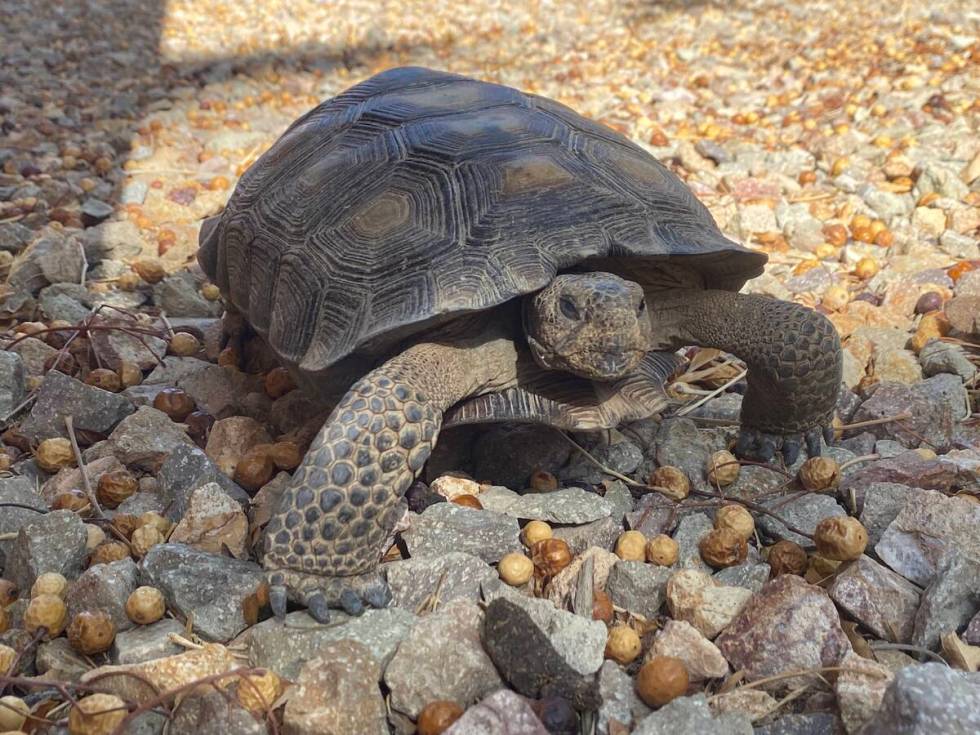
Opportunity Village’s Tulip, who lives at the nonprofit’s Engelstad Campus at Buffalo Drive and Patrick Lane, is the youngest tortoise celebrity at 11 years old, with 21-year-old Max, 19-year-old Carson and 40-to-50-year-old Wattson as her elders.
Tulip’s burrow is at Sean’s Park, a playground specially made for people with intellectual disabilities. Last year she emerged just days before Max, who Opportunity Village claims is her celebrity crush. (Tulip herself could not be reached for comment.)
Her emergence “has been a little different every year. Some years have been a little earlier, some a little later,” said Sarah Quinn, Opportunity Village’s director of program services. “It’s been a little colder longer this year, so I suspect it’ll be a little while before we see her.”
Why a tortoise?
But why use a tortoise as a mascot at all?
One group that connects Tulip, Wattson and Carson is the Tortoise Group, Nevada’s sole tortoise adoption agency. Its executive director, Sarah Mortimer, says she believes many organizations adopt tortoises because they provide great learning opportunities for those who interact with them.
“I think having an actual live animal that people are caring for and nurturing provides them with the inspiration to learn more about the wild populations and what’s impacting them and what they can do to help conservation efforts,” she said.
Quinn echoed Mortimer, saying tortoises can help people in Las Vegas learn more about what lies beyond the Strip.
“It’s a unique feature of the Southwest to even have a tortoise, and so it’s not just the aspect of (saying) ‘it’s cool to have one,’ but to use it as a learning tool for how to care for animals, to learn about geography and Nevada history and the things that are unique to Southern Nevada.”
Slow and steady wins the race
There isn’t much explicit competition on which tortoise will emerge first this year, but Opportunity Village’s social media has joked of a matchup between Max and Tulip.
Locke says she doesn’t see that the two torts are in competition.
“Have you ever been in a competition you didn’t know you were in? That might be the case,” Locke said. “But for us, we’re just excited when they start to move at all.”
Contact Taylor Lane at tlane@reviewjournal.com.



